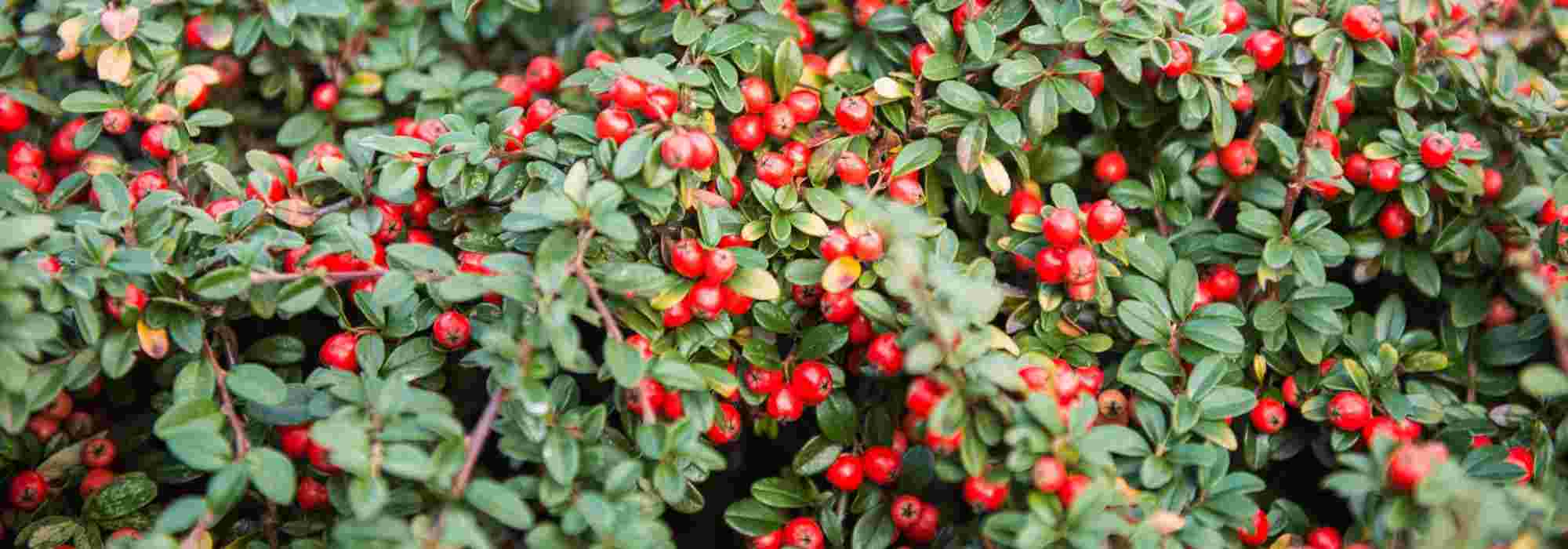
Cotoneaster: which to choose?
Best varieties by use
Contents
Very easy to grow, drought- and frost-resistant, and very adaptable to soil type, the Cotoneasters are well suited both for novice gardeners and for those who don’t have much time to devote to care. Renowned for their attractive, warm-toned fruit, they also offer a lovely spring flowering. Green foliage can persist year-round or change colour before falling. Extremely versatile, choosing among the wide range of species and varieties can sometimes be difficult.
In this article, I suggest ideas for using Cotoneasters. Are you looking for a bush to create a protective hedge, or one that can act as a groundcover and smother weeds? Or perhaps you have a bank to cover, a rockery to plant, or a low wall to dress? Unless you’re looking for a bush that’s easy to grow in a pot, or even to train as a bonsai… look no further!
Here are some ideas to get the most out of your Cotoneaster in any situation!
Cotoneaster for hedges
Appreciated for their rapid growth and dense foliage, Cotoneasters make excellent screening and windbreak bushes in countryside and natural hedges. Their spring flowering is followed by red-to-orange berries, whose decorative effect often lasts into part of the winter.
Among the varieties best suited to hedges are Cotoneaster lacteus (3m x 3m), with a rather upright and relaxed habit, whose green, evergreen foliage provides a perpetual screen. You might prefer Cotoneaster franchetti, with a flatter habit (3m x 3.5m), which tolerates semi-shaded positions and displays a beautiful pale-pink flowering and salmon-coloured fruits. While Cotoneaster lucidus has deciduous foliage, it offers beautiful autumn colours and deep, dark purple berries. Its smaller dimensions (2m x 1m) also make it suitable for smaller gardens. All these species tolerate pruning well, are easy to grow and adapt to a wide range of soils and climates.
To divide two parts of the garden without blocking the view, opt for Cotoneaster microphyllus, with a creeping character and reaching no more than 80cm high with a 1.5m spread, or C. procumbens ‘Queen of Carpets’, even more compact (50cm x 1m), whose red berries are also much appreciated by birds.
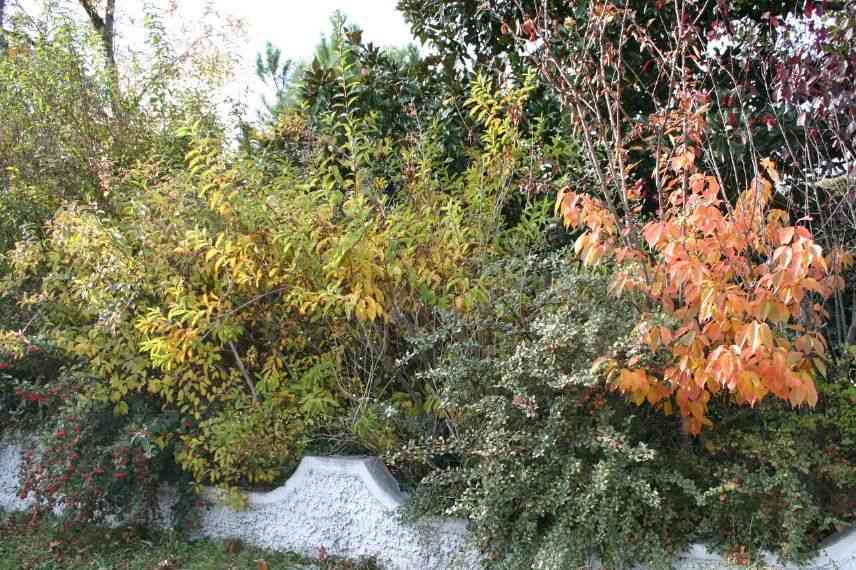
Cotoneasters in a hedge
Read also
Cotoneaster: planting, pruning, careGroundcover varieties for borders, rockeries and slopes.
Some Cotoneaster varieties work wonders when used for their ability to cover soil and suppress weeds. Their great versatility makes them suitable for use in borders, at the base of trees, along a patio, atop a low wall or a bank, or in a rockery.
Cotoneaster integrifolius does not exceed 40 cm in height, but its spreading habit allows it to cover 80 cm on the ground. Its green foliage is somewhat reminiscent of thyme and it is an evergreen bush with rather slow growth.
For larger areas to cover, the lesser-known Cotoneaster adpressus is ideal. Although it does not exceed 40 cm in height, it offers a spread of around 2 m. Its deciduous foliage, slightly undulate and mid-green in season, turns a magnificent red in autumn. If, like most Cotoneasters, it can withstand occasional drought, it is however less comfortable under very hot, very dry climates, under which you will prefer Cotoneaster procumbens ‘Strieb’s Findling’, a deciduous variety that remains particularly prostrate (15 cm) and displays compact growth. Its curved shoots root spontaneously on contact with soil, allowing it to spread even in difficult areas.
Cotoneaster dammeri is also an excellent choice, particularly good for ground cover, whether the species type (25 cm x 2 m) or cultivars such as ‘Evergreen‘, with a more compact habit (15 cm x 2 m), or ‘Eichholz‘ (35 cm x 1.8 m).

Cotoneaster cascading from a wall
Discover other Cotoneaster
View all →Available in 3 sizes
Available in 3 sizes
Available in 2 sizes
Available in 1 sizes
Available in 1 sizes
Available in 2 sizes
Available in 3 sizes
Available in 2 sizes
Available in 1 sizes
Available in 1 sizes
Cotoneasters for a colourful autumn
Not all Cotoneasters are evergreen, but this drawback can be used as an advantage when you select varieties whose foliage turns fiery before falling, revealing then berries in vivid shades, ranging from orange to bright red.
The Cotoneaster horizontalis (1m x 1.5m) thrives in sun or partial shade, and its green foliage takes on orange hues in autumn, then revealing bright red berries that brighten the garden during the dullest months. The ‘Variegatus’ variety is more compact (45cm x 90cm) and particularly attractive in partial shade, where its cream-variegated foliage is shown off to best effect. Among other interesting varieties already mentioned, do not forget Cotoneaster adpressus and Cotoneaster lucidus, two other excellent candidates for adding colour to the garden later in the season.
Cotoneasters to grow in pots, on a terrace or balcony.
Their ability to tolerate pruning very well, together with dense foliage and an often supple habit, are all assets ensuring Cotoneasters need not be reserved solely for borders and open ground. Ce are in fact excellent bushes to grow in pots or tubs, so they can be enjoyed on a terrace or balcony. Some varieties also lend themselves easily to the art of bonsai.
The Cotoneaster horizontalis (1 m x 1.5 m) enlivens spaces year-round, from its pinkish-white spring flowering to the lovely autumn colours of its deciduous foliage, not forgetting its long-lasting fruiting and its branches with a fishbone arista habit. For a luminous effect, variety ‘Variegatus‘ displays variegated foliage of green and cream, with a more compact habit (45 cm x 90 cm).
With a spreading habit (50 cm x 1 m), small white flowers in May and red berries appearing in autumn, C. procumbens ‘Queen of Carpets’ has more than one asset. Its evergreen foliage thus allows, in a suitably sized tub, to dress the base of taller plants all year round. For an even lower tapetum (25 cm x 1.8 m) and colouring to purplish in autumn, turn to Cotoneaster adpressus ‘Little Gem’, with deciduous foliage.
The Cotoneaster suecicus ‘Coral Beauty’ forms a fairly regular flattened dome (60 cm x 1 m), whose evergreen foliage is lit by a pleasant white flowering in spring, followed by numerous globose fruits of a charming coral colour.
If bonsai art appeals to you, Cotoneaster horizontalis and C. ‘Coral Beauty’, mentioned above, are prime candidates. You can also select C. microphyllus, with evergreen foliage.

Some Cotoneasters adapt well to growing in a pot or to bonsai art
- Subscribe!
- Contents
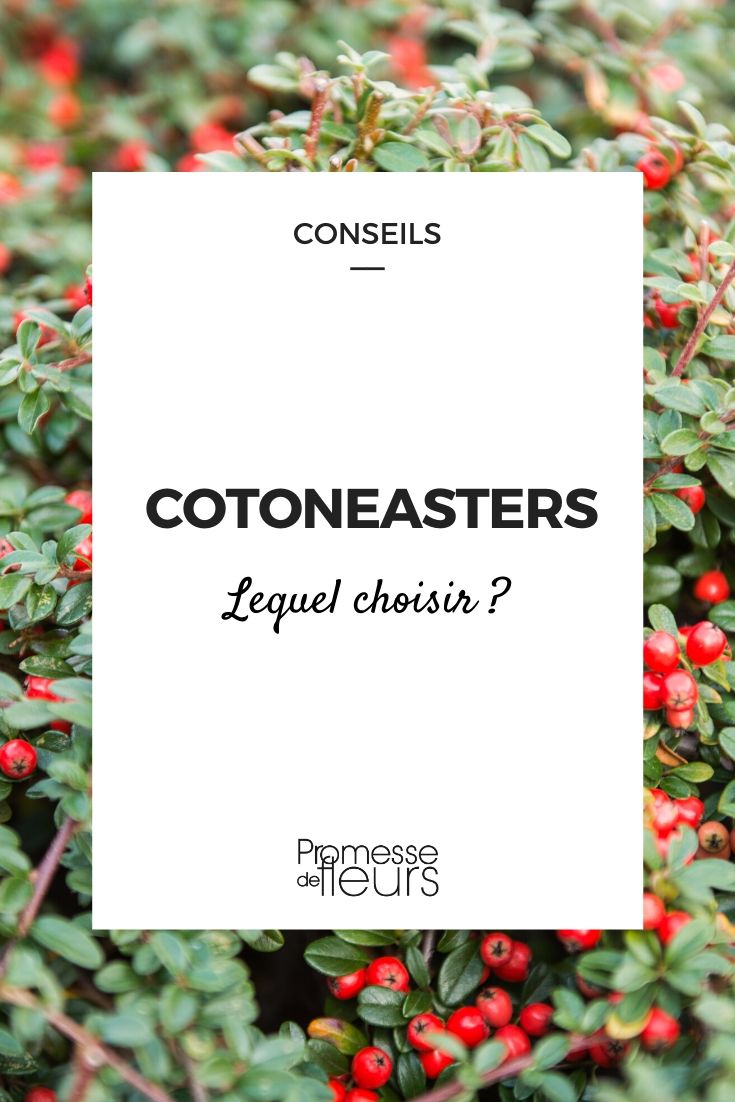































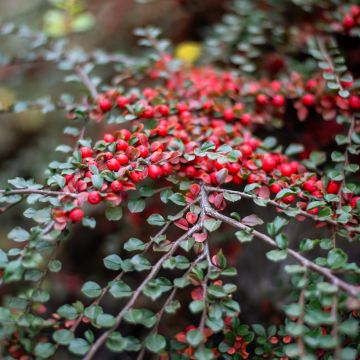
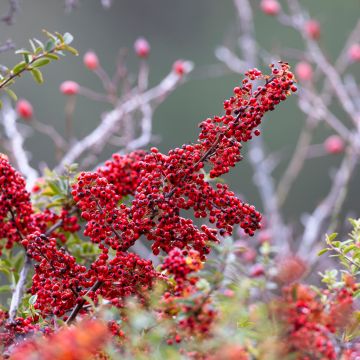
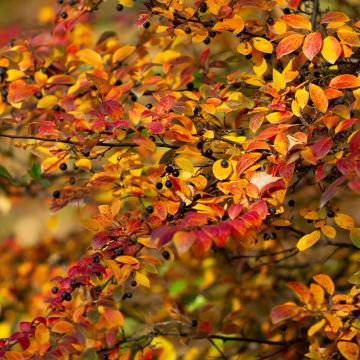
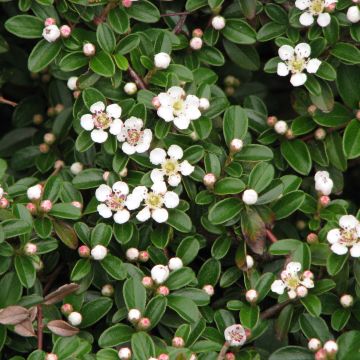
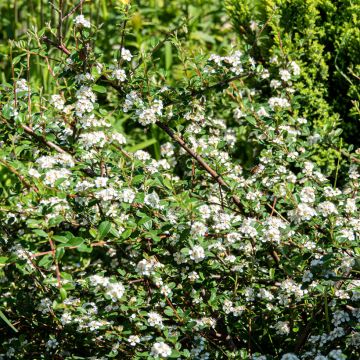

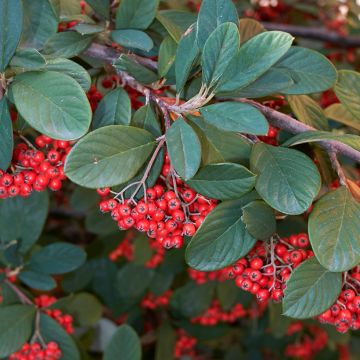
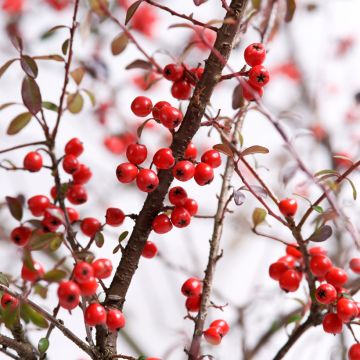

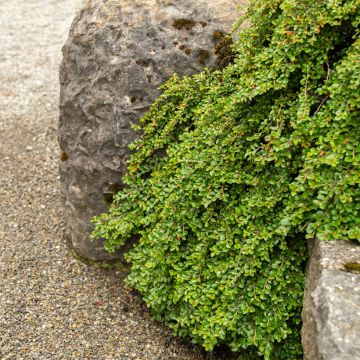
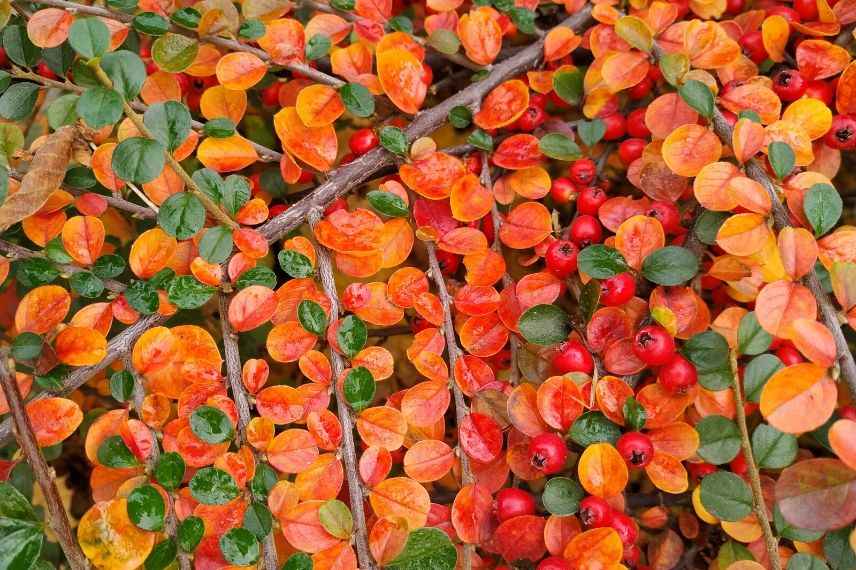
Comments